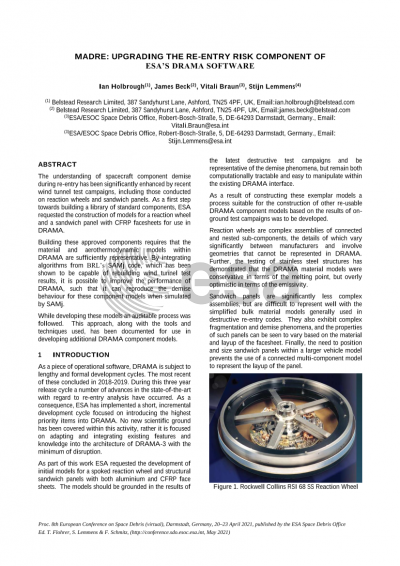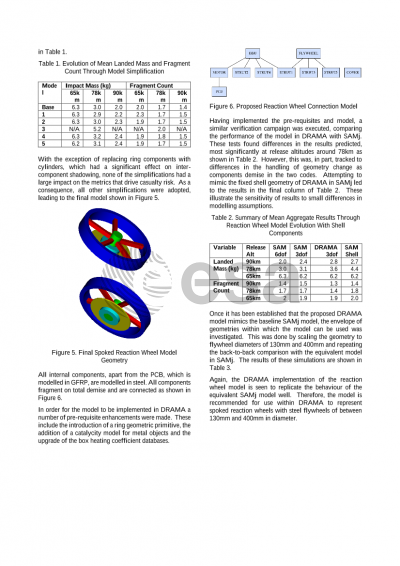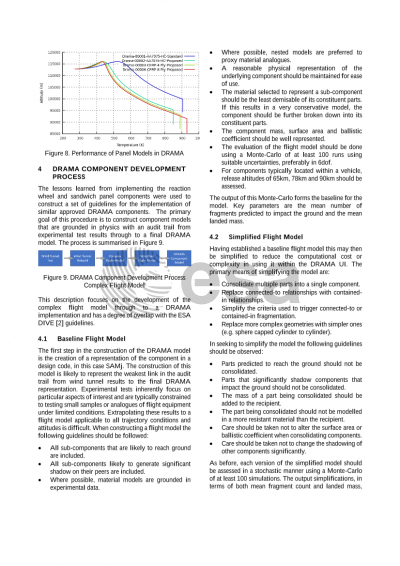Document details

Abstract
The understanding of the demise of spacecraft components during re-entry has been enhanced significantly by recent wind tunnel testing campaigns. Included within these campaigns were tests on reaction wheels and sandwich panels with both aluminium and CFRP facesheets, providing an opportunity to devise test-supported models of such spacecraft componentry for use within destructive re-entry tools.
In order to improve the consistency of the models of spacecraft components used within destructive re-entry ground risk assessments, it has been proposed to build a library of standard component models which can be accessed by spacecraft engineers to use in building their spacecraft model. As a first step towards this concept, ESA requested the construction of a model for a reaction wheel and for a sandwich panel with CFRP facesheets for use in DRAMA.
The construction of these models requires that the material and aerothermodynamic heating models within DRAMA are sufficiently representative. Test campaigns have allowed the verification of material models, heating models and component demise behaviour within the component-based SAM destructive re-entry tool which is able to rebuild the test data. Thus, an enhancement of DRAMA has been performed based on the spinning in of the required physical modelling available in SAM in order to properly capture the reaction wheel and sandwich panel demise phenomenologies.
In developing the component models an auditable process was followed from the original wind tunnel test results and numerical rebuilding, through the construction of component flight models in SAM, the stochastic evaluation of the model behaviour using ESA’s stochastic re-entry analysis framework (PADRE), the simplification of the flight model to a DRAMA compatible analogue, the determination of the necessary DRAMA enhancements, and the construction and validation of a suitable DRAMA model.
Reaction wheels are complex assemblies of connected and nested sub-components, the details of which vary significantly between manufacturers and involve geometries that cannot be represented in DRAMA. To support the development of this model, models it was necessary to add support for ring / tube primitives to DRAMA with their associated aerodynamic and heating correlations from SAM. Further, the testing of stainless steel structures has demonstrated that the DRAMA material models were conservative in terms of the melting point, but overly optimistic in terms of the emissivity. An upgraded material model has been implemented. The reaction wheel model implemented into the DRAMA database is a spoked design, and contains 10 joined components, inclusive of five spokes, a flywheel, a motor and a ball bearing unit.
Sandwich panels are significantly less complex components, but are difficult to represent well with the simplified bulk material models generally used in destructive re-entry codes, and exhibit complex fragmentation and demise phenomena. To capture the behaviour of the sandwich panels, without requiring significant complexity in the sizing and positioning of separate parts within the DRAMA GUI, these panels were represented using a set of test-derived equivalent material models such that the demise of the material is based on the observed separation of the facesheets from the honeycomb. These material models vary for aluminium, 4-ply CFRP and 8-ply CFRP facesheets.
Preview









